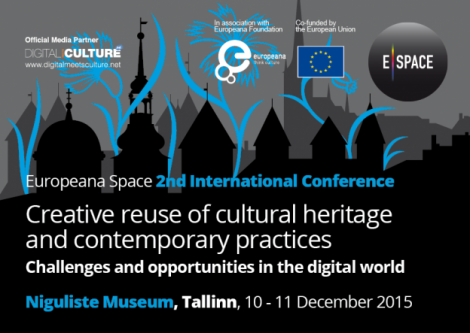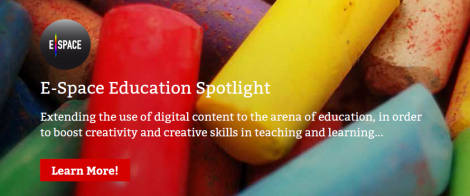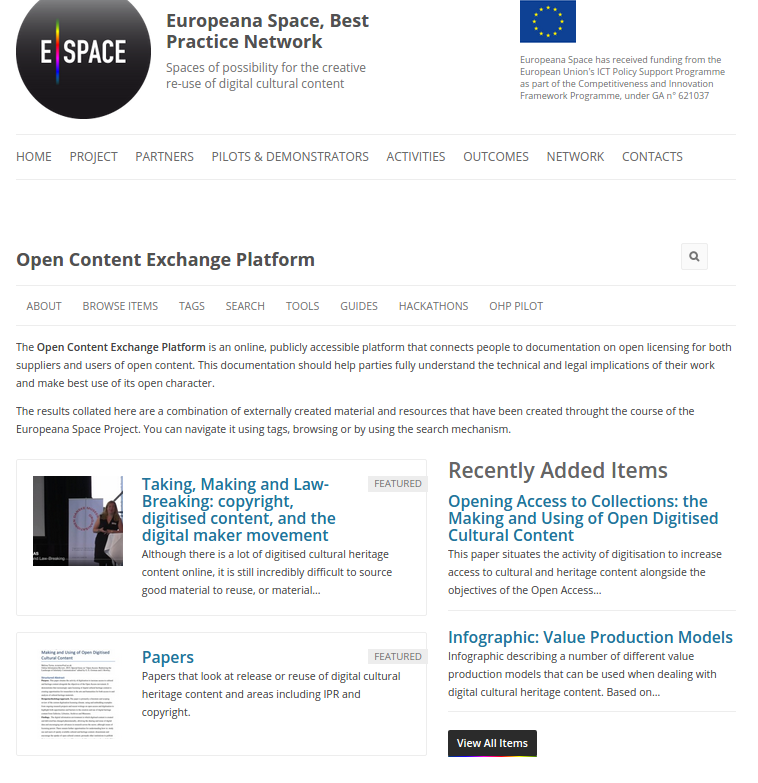Creative reuse of cultural heritage and contemporary practices – challenges and opportunities in the digital world
Last week the consortium of the Europeana Space (E-Space) project came together for both a project meeting and the international conference on Creative reuse of cultural heritage and contemporary practices in Tallinn, Estonia. Over the course of three days they presented and discussed the various ways in which the project works on stimulating the reuse of Europeana content by creative industries.
Espace is running pilots in six different areas, focused on developing innovative applications that use digitized cultural heritage material in creative ways, as well as supporting new business and sustainability models around these innovations. Each pilot also organises a hackathon event, in which participants are encouraged to new and interesting ways to reuse cultural heritage content in domains such as film, TV, photography, dance and publishing.
In the project meeting on 9 December, the consortium partners (a mix of 29 cultural institutions, broadcasters, universities, national cultural agencies and SMEs) discussed the busy months ahead: four hackathons will take place in 2016, while the work in the TV and Dance pilots is now in the incubation period: the most promising projects are being further shaped in Business Modelling Workshops to explore the business potential of the project ideas. A report of the most recent hackathon, Hacking the Dancing Body, is now available from this blog of the Netherlands Institute for Sound and Vision. While combining cultural heritage material with dance and technology seemed quite challenging at first, the event generated exciting ideas, such as using BCI (Brain Computer interface) technology as a new way to explore Europeana collections. Next up from 22-24 January will be the Hack the Book festival: all information on these upcoming events is available here.
In addition to the hackathons, the project is also working on a set of educational demonstrators: five examples of creative reuse of digital cultural content for education, as well as a MOOC (Modular Open Online Course) to learn what you can do with digital cultural heritage in your research or classroom. Barbara Dierickx of PACKED gave an overview of the ongoing work, after which the five different demonstrators gave a preview of their progress:
- Photographic Investigation of Art Works – Frederik Temmermans (iMINDS) showed the website Closer to Van Eyck – Rediscovering the Ghent Altarpiece which presents the Ghent Altarpiece (1432) in visual light macrophotography, infrared macrophotography, infrared reflectography and X-radiography. For this demonstrator, the site will be further updated, keeping in mind an educational dimension, and iMINDS will deliver guidelines on how to increase interactivity with the public by giving innovative, ‘live’ access to an art restoration campaign
- The Rode Altarpiece – the participants visited the actual work later in the afternoon in the Niguliste Church in the city centre of Tallinn
- The Cavafy archive – Thodoris Chiotis & Prodromos Tsiavos (Onassis Cultural Centre) presented the digital application that showcases the work of seminal Greek poet C. P. Cavafy, housing digitised manuscripts of a specific number of Cavafy poems along with audio and video recordings of said poems and audiovisual commentary by leading scholars.
- 3D visualization of archaeological heritage
- Irish poetry & folk tales – The Irish Folktales demonstrator combines Irish folktales with new elements such as audio and video (recordings from storytellers), illustrations and lessons in a digital storytelling application, to demonstrate the potential that cultural heritage and creative industry partnerships can have.
The first version of the ESpace education miniwebsite is now up and running as well at http://www.europeana-space.eu/education/: here you can follow future progress of all five demonstrators.
With all this work, background information and guidance on issues around IPR, copyright and licensing is often needed, which is why ESpace has created the Content Space as a central place to access guidelines, tools and methods for managing IPR, clearing copyright and exchanging open content. Open Knowledge has been developing the Open Content Exchange Platform, which now contains over 100 resources that help both users and suppliers of open content fully understand the technical and legal implications of their work and make best use of its open character. Further resources will be added in early 2016, and a background document on the platform and its functionality will be shared in February 2016. If you know of any resources that should be in there, please let us know!
Following on the project meeting, the project organised their second international conference on creative reuse of cultural heritage, with keynote speeches, two round tables of experts, a poster session for the project pilots and a loop presentation of the project educational demonstrators. The presentations of the event can now be accessed from this site.



